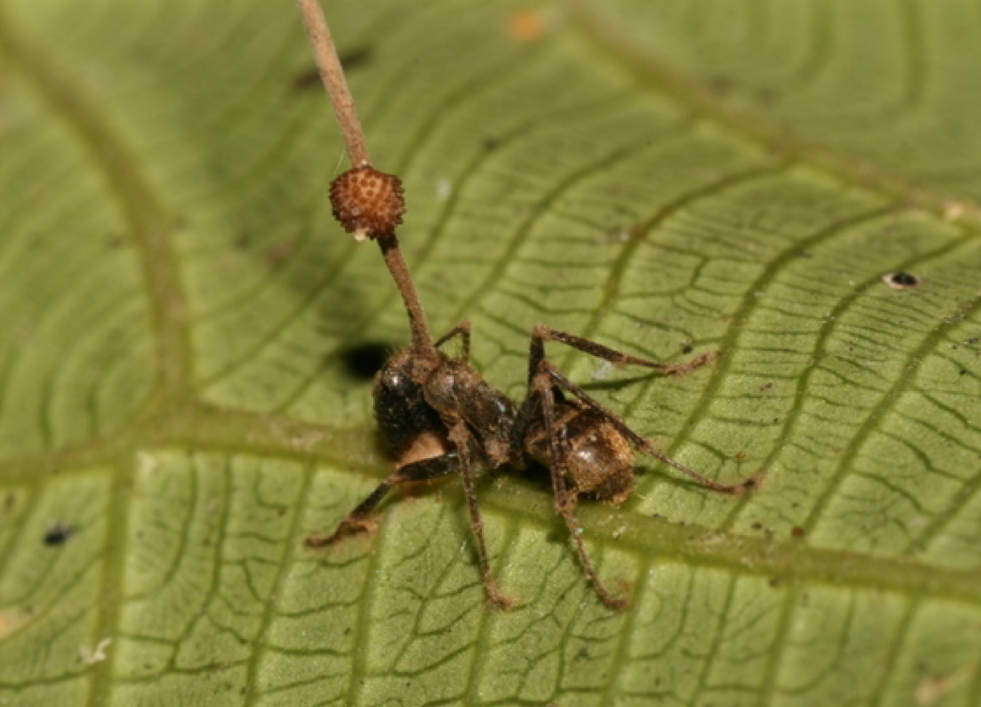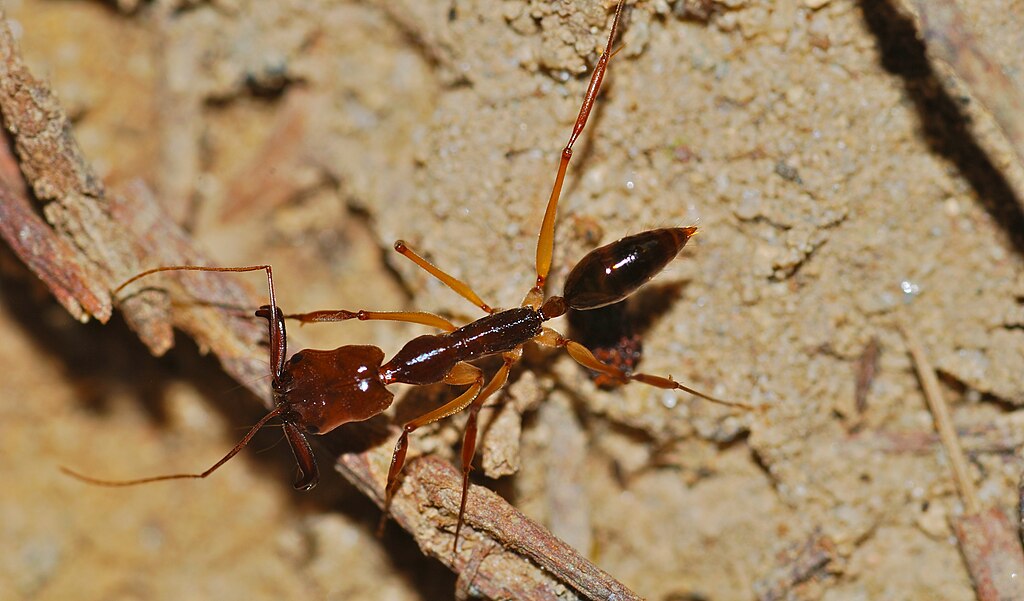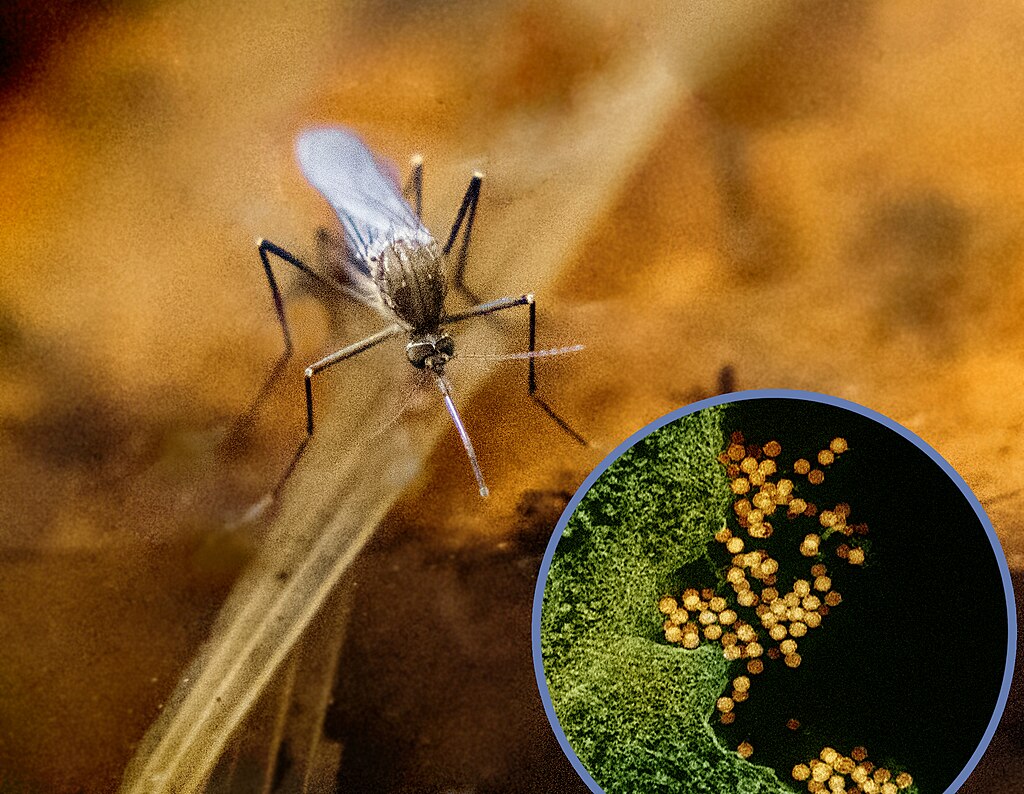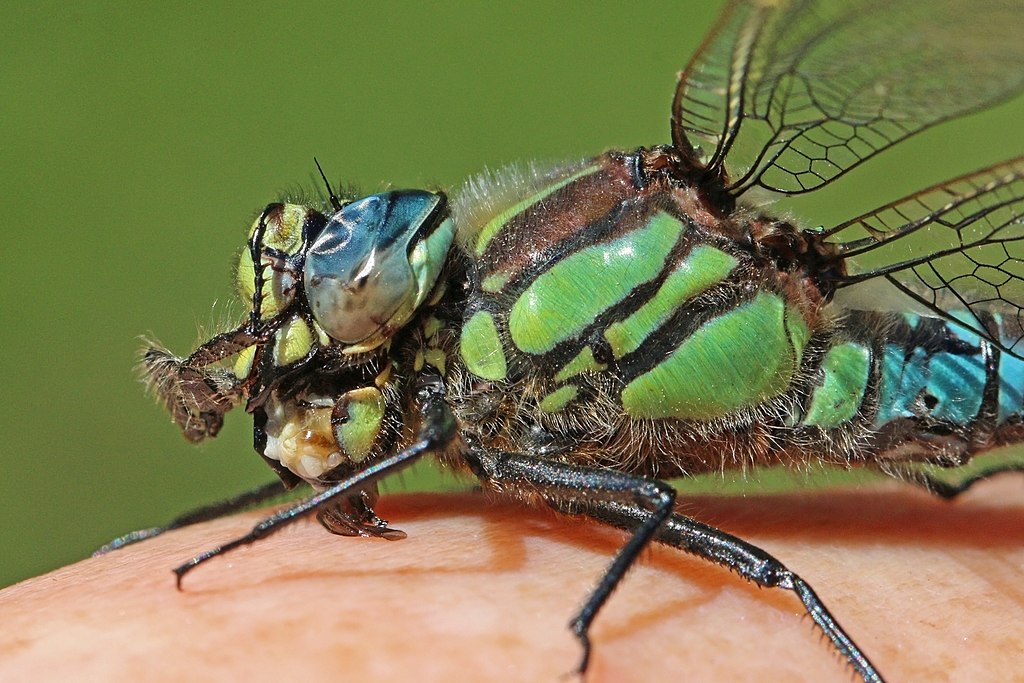In the vast and vibrant world of insects, communication takes forms so bizarre and ingenious that they challenge our understanding of animal behavior. From chemical signals that manipulate other species to percussion systems rivaling human drummers, insects have evolved communication methods that seem like science fiction. While humans rely primarily on visual and auditory signals, insects employ an extraordinary array of sensory channels—chemical, vibrational, visual, and even electrical—to share information. This article explores the strangest and most fascinating communication systems ever documented in the insect world, revealing how these tiny creatures have developed solutions to life’s challenges that often leave scientists both baffled and amazed.
The Exploding Ants of Borneo

Perhaps one of the most dramatic forms of insect communication involves self-sacrifice so extreme it’s hard to comprehend. Certain species of carpenter ants in Southeast Asia (genus Colobopsis) have evolved a defense mechanism where minor worker ants essentially commit suicide to protect their colony. When threatened, these worker ants contract their abdominal muscles so violently that their bodies burst open, spraying a sticky, toxic yellow fluid onto enemies. This explosive self-destruction, called autothysis, serves as both a warning and defensive communication to colony members. The chemical composition of this secretion not only immobilizes predators but sends alarm signals to other ants in the vicinity. Remarkably, these ants have evolved specialized abdominal glands that produce this defensive cocktail specifically for this communication purpose, demonstrating how communication and defense have become intricately intertwined through evolution.
Zombie-Inducing Fungal Mind Control

The cordyceps fungus has evolved one of the most disturbing forms of inter-species “communication” ever documented. This parasitic fungus infects ants and effectively hijacks their nervous systems, creating what scientists call “zombie ants.” The fungus chemically manipulates the ant’s behavior, forcing it to leave its colony and climb to an elevated position ideal for fungal spore dispersal. The infected ant will bite down on a leaf vein or twig with unnaturally strong force—a behavior called the “death grip”—and remain there while the fungus consumes its internal organs. Most fascinatingly, recent research has revealed that the fungus produces compounds that mimic the ant’s own neurotransmitters, essentially “speaking” to the ant’s brain in its own chemical language. This represents a unique form of cross-species chemical communication where one organism has evolved to decode and manipulate the communication system of another entirely different species.
Bombardier Beetles’ Chemical Cannons

Bombardier beetles possess what might be the most sophisticated chemical defense system in the insect world, which doubles as a powerful communication tool. When threatened, these beetles mix chemicals from two separate glands in their abdomen, creating an explosive reaction that produces a boiling, noxious spray that can be directed with remarkable accuracy at predators. The chemical reaction reaches temperatures of around 100°C (212°F) and makes an audible popping sound when discharged. This dramatic chemical display serves multiple communication purposes: it warns predators directly about the beetle’s defensive capabilities, alerts other beetles to danger, and can even signal potential mates about genetic fitness. Research has shown that some species can fire up to 20 consecutive defensive sprays, with each blast precisely calibrated for the specific threat level—essentially a nuanced communication system that conveys different intensities of warning.
Treehoppers’ Musical Plant Stems

Treehoppers (family Membracidae) have evolved one of the most sophisticated vibrational communication systems ever documented in insects. These small bugs transform plant stems into living speakers by creating precise vibrations that travel through the plant tissue. What makes their communication truly remarkable is how they’ve essentially “hacked” plant physics—they can adjust the frequency and amplitude of their signals to match the resonant properties of different plant stems, maximizing signal transmission. Recent research using laser vibrometry has revealed that treehoppers produce complex songs with distinct rhythmic patterns, frequency modulations, and durations that communicate specific messages about territory, mating availability, and danger. Perhaps most impressively, treehoppers can distinguish between the vibrational “songs” of different species even when multiple insects are communicating simultaneously on the same plant—a feat comparable to humans picking out a specific conversation in a crowded, noisy room.
The Dance Language of Honeybees

While the honeybee waggle dance might be familiar to many, the complexity and precision of this communication system remains one of biology’s most elegant examples of symbolic language. When a foraging bee discovers a profitable food source, it returns to the hive and performs a figure-eight dance on the vertical surface of the honeycomb. The middle portion of this dance—the waggle run—encodes precise information about distance and direction to the food source. What makes this system truly extraordinary is that bees translate the sun’s position relative to the food source into a corresponding angle on the vertical honeycomb, effectively creating a symbolic map inside the dark hive. Recent research has revealed even more sophistication: bees adjust their dance to account for wind speed and direction that other foragers might encounter, include information about food quality through dance vigor, and can even communicate the presence of predators near food sources by incorporating specific vibration signals into their dances.
Termite Headbanging Alarm Systems

When danger threatens a termite colony, soldier termites engage in one of the strangest alarm communications in the insect world: they literally bang their heads against the walls of their tunnels. This behavior, technically called “acoustic drumming,” creates vibrations that travel through the entire termite nest structure, alerting the colony to potential threats. What makes this system particularly remarkable is how termites have evolved specialized anatomical features—hardened head capsules and precisely tuned neck muscles—specifically for this communication purpose. Different species of termites produce distinctive drumming patterns with varying frequencies and rhythms that encode specific information about the type and severity of the threat. Recent studies using sensitive accelerometers have revealed that these vibrations can travel more than two meters through the nest substrate, and termites can distinguish between the drumming patterns of different colony members, allowing them to respond appropriately to various threats based on who is sending the alarm.
Firefly Light Code Systems

Fireflies have developed perhaps the most visually spectacular communication system in the insect world, using bioluminescent signals to create complex patterns of flashing lights. Each firefly species has evolved its own unique flash pattern—a specific sequence of light pulses with precisely timed durations and intervals that serves as a biological Morse code. Males typically fly through the environment displaying their species-specific pattern, while females respond with their own precisely timed flash from perches on vegetation. What makes this system especially remarkable is how fireflies can recognize their species’ pattern amid the visual noise of multiple species flashing simultaneously in the same habitat. Recent research has uncovered even more complexity: some female fireflies of the genus Photuris have evolved the ability to mimic the flash patterns of females from other species, luring in males of those species to capture and eat them—a phenomenon called “aggressive mimicry” that represents a particularly sinister form of cross-species communication deception.
The Chemical Warfare of Army Ants

Army ants have evolved one of the most elaborate chemical communication systems in the animal kingdom, using dozens of different pheromone signals to coordinate massive colony movements involving millions of individuals. These ants create living architectural structures, from bridges to bivouacs, entirely through chemical signals that indicate where each ant should position itself. What makes their communication truly extraordinary is how they’ve developed a sophisticated system of “chemical highways”—trails of pheromones with different concentrations that indicate traffic direction, trail importance, and food quality. Recent research has discovered that army ants produce different pheromone blends from multiple glands in their bodies, essentially creating a chemical vocabulary that can communicate nuanced messages about resource quality, danger levels, and colony needs. Perhaps most impressively, these ants can dynamically update their chemical trails in real-time, with thousands of individuals collectively maintaining an ever-changing network of chemical information that allows the colony to function as a unified superorganism.
The Trap-Jaw Ant’s Supersonic Snaps

Trap-jaw ants possess mandibles that can close at speeds exceeding 140 mph, creating one of the fastest movements in the animal kingdom. While these powerful jaws are used for hunting and defense, researchers have discovered they also serve a remarkable communication function. When threatened, certain species of trap-jaw ants will snap their mandibles against the ground, launching themselves into the air while simultaneously producing a powerful sound pulse that travels through both the air and substrate. This acoustic signal serves as an alarm communication to nestmates, warning of danger while the ant itself escapes. The frequency and pattern of these mandible snaps contain specific information about threat type and urgency, allowing colony members to respond appropriately. What makes this communication system particularly unusual is that it repurposes a feeding structure for communication, demonstrating how evolution can create multifunctional anatomical adaptations that serve both practical and communicative purposes.
The Mosquito’s Wing-Beat Romance

Mosquitoes have evolved one of the most acoustically precise communication systems ever documented in insects, using their wing beats to create tones that function as species-specific mating calls. Male and female mosquitoes identify suitable mates by matching wing-beat frequencies, engaging in a form of aerial duet where they synchronize their wing movements to produce harmonized tones. What makes this system truly extraordinary is its incredible specificity—some mosquito species distinguish potential mates based on frequency differences of less than 5 Hz (cycles per second). Recent research using high-speed microphones has revealed that mosquitoes can detect and respond to each other’s wing-beat frequencies even in crowded, noisy environments with multiple species present. This acoustic “handshake” ensures that only compatible individuals attempt to mate, preventing hybridization between closely related species. Even more remarkably, some mosquito species have evolved the ability to adjust their wing-beat frequencies in response to environmental noise, effectively shifting their communication to less crowded frequency bands—a phenomenon surprisingly similar to humans speaking louder or changing tone in noisy environments.
Leafcutter Ants’ Agricultural Feedback Loops

Leafcutter ants operate complex agricultural systems where they cultivate fungal gardens inside their nests, creating one of the most sophisticated interspecies communication networks ever documented. The ants harvest plant material which they feed to their symbiotic fungus, but this relationship involves remarkably nuanced chemical communication between the ants and their fungal crop. The fungus produces specific chemical compounds that inform the ants about its nutritional needs and growth conditions, essentially “telling” the ants which plant materials are beneficial or harmful. When introduced to toxic plants, the fungus releases stress chemicals that the ants can detect, prompting them to avoid harvesting that particular plant species in the future. Recent research has revealed that this chemical dialogue extends even further—the fungus can communicate information about specific nutrients it requires, leading ants to selectively harvest plants with those particular compounds. This three-way communication system between ants, fungi, and plants represents one of the most complex networks of chemical information exchange known in nature, having evolved over millions of years of symbiotic relationship.
The Electric Field Detection of Bumblebees

In what might be the most surprising insect communication discovery of recent decades, scientists have found that bumblebees can detect and communicate through electric fields. As bees fly through the air, their wings generate positive electric charges, while flowers typically maintain a negative charge. When a bee visits a flower, it changes the flower’s electric field—a change that persists for several minutes and can be detected by other bees. This electrical “footprint” serves as a temporary communication signal to other foragers about which flowers have recently been visited and likely have reduced nectar rewards. What makes this communication system truly extraordinary is that it represents an entirely unexpected sensory capability—bees have specialized hairs that move in response to electric fields, functioning similarly to how human hair might stand up near a static electricity source. Recent research has revealed that bees can even learn to associate specific artificial electric field patterns with food rewards, suggesting they may use electrical information in more complex ways than originally thought.
The Future of Insect Communication Research

The study of insect communication continues to reveal systems of information exchange that challenge our understanding of animal cognition and sensory biology. New technologies like nanoscale vibrational sensors, chemical detection at the molecular level, and advanced computational modeling are helping researchers decode communication systems that remained hidden for centuries. Perhaps most exciting is the potential application of these discoveries to human challenges—insect chemical signals are inspiring new approaches to pest control that don’t rely on harmful pesticides, while the efficient network communications of social insects are informing developments in swarm robotics and distributed computing algorithms. As climate change and habitat loss threaten insect populations worldwide, understanding their communication systems has taken on new urgency, both for conservation efforts and for documenting these remarkable adaptations before species are lost. The weird and wonderful world of insect communication reminds us that intelligence and complexity in nature often appear in forms radically different from our human-centered expectations.
Conclusion

From exploding ants to electric field detection, insect communication represents some of the most innovative solutions to life’s challenges that evolution has produced. These tiny creatures, with brains often smaller than a pinhead, have developed communication systems that rival human technology in their sophistication and efficiency. As we continue to study these remarkable adaptations, we’re reminded that the natural world still holds countless mysteries waiting to be discovered—and that sometimes the strangest and most wonderful phenomena exist right beneath our feet, in the buzzing, chirping, chemical-signaling world of insects.

